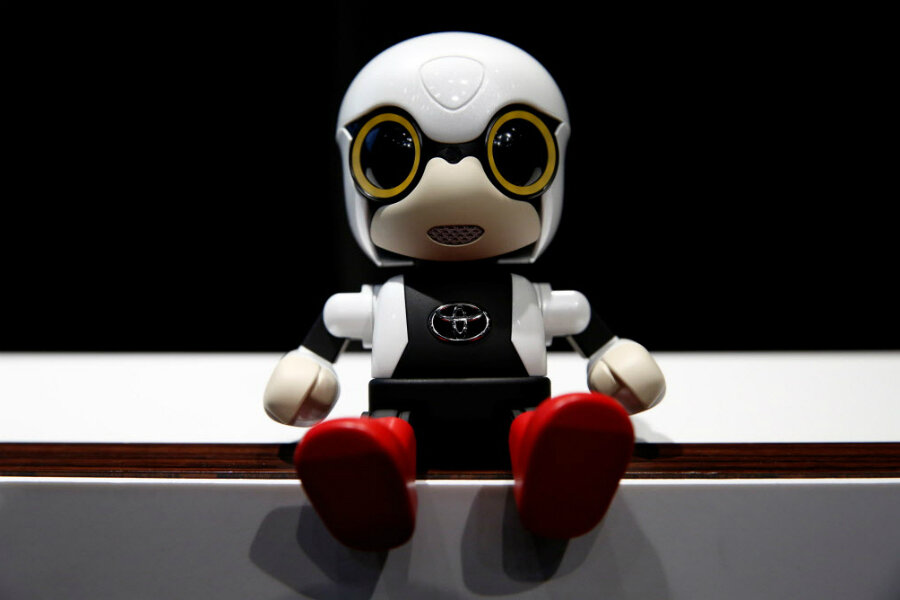Can people bond with a robot baby?
Loading...
In Episode 7 of "The Twilight Zone," a convicted prisoner falls in love with a humanoid robot while serving his sentence on an abandoned asteroid. In Spike Jonze’s drama "Her," the introverted Theodore Twombly becomes emotionally attached to an artificial intelligence named Samantha.
In another story, set in the present day, an automotive company designs a robotic baby and markets it toward childless mothers. But this time, it’s not sci-fi.
On Monday, Toyota Motor Corp debuted Kirobo Mini, a robotic companion small enough to fit in a cupholder. With big eyes and a high-pitched voice, Kirobo is designed to trigger a maternal response from its owner. But can humans really bond with technology outside of science fiction?
Not exactly, Guy Hoffman says. Dr. Hoffman, a professor of engineering at Cornell University in Ithaca, N.Y., specializes in human-robot interactions. In a phone interview with The Christian Science Monitor, he notes that robots, while adept at mimicking human behaviors, still can’t connect completely.
“Technology definitely has the capability to evoke human emotions and behaviors,” Hoffman says, “but there’s still a big difference between that and the way we relate to other humans.”
In one study, Hoffman and colleagues asked participants to interact with one of two different robots. Afterward, subjects would record a video of themselves for a dating website. Those who interacted with the “social” robot felt more confident about their video than those who spent time with the more mechanical-looking automaton.
“It’s a good example of how a robot’s behavior toward us can evoke some of the same psychological effects [as a human’s behavior]. Robots can affect how we feel about ourselves and how we behave,” Hoffman says.
Unlike other intelligent technologies, robots have physical bodies. They can move in space and use body language. They can even take advantage of spatial relationships, such as coming closer, moving away, nodding or making eye contact.
In another study, Hoffman and colleagues intentionally designed a robot to be vulnerable. When people raised their voices beyond a certain point, the robot would become visibly scared. The robot couldn’t experience emotions the same way humans do, but it still evoked an empathetic response – participants reported that the bot made them more conscious of their own voices.
“This robot, by its own fragility, causes you to notice the fragility of other people,” Hoffman says.
Kirobo Mini relies on similar patterns of motion to foster a human-robot bond. In Japan, where birth rates have dropped by about half in the past 50 years, Kirobo is meant to evoke the fragility of a human baby.
“He wobbles a bit, and this is meant to emulate a seated baby, which hasn't fully developed the skills to balance itself,” Fuminori Kataoka, Kirobo Mini's chief design engineer, told Reuters. “This vulnerability is meant to invoke an emotional connection.”
Today, robots are both cheaper and more powerful than ever before. In the coming years, experts say commercial robots will expand their usual roles, going from industrial workers to assistive, social robots. PARO, a robotic seal, is already used in Japan as a therapeutic companion for the elderly. Jibo, a robot assistant developed by MIT engineers, can converse with its human owners.
But as the presence of robots increases in stores, hospitals, and schools, Hoffman offers a warning.
“I think we should steer away from situations in which robots replace humans just for the reason that they can,” Hoffman says. “As robots move from the industrial space to service areas, we need to be careful in how we replace human labor.”






